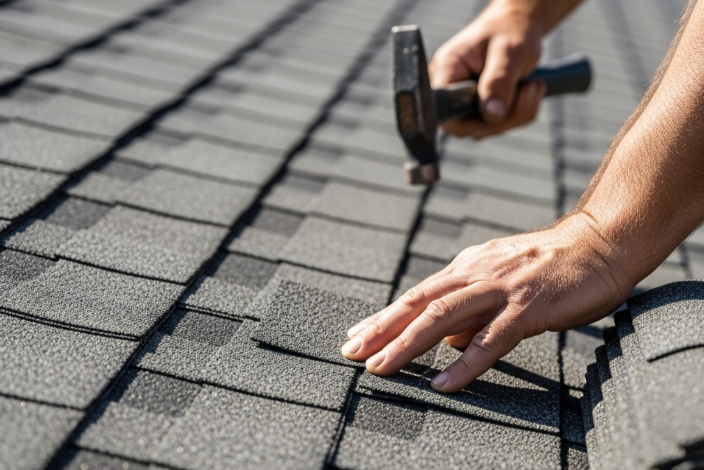When observing your home’s roof, you probably only notice the shingles or tiles that contribute to its color and design. However, what is visible on the exterior is merely one component of a sophisticated and meticulously designed system. A high-quality roof consists of a precisely coordinated arrangement of various layers, each serving a distinct purpose to safeguard your home against environmental factors.
Gaining insight into the structure of your roof is the initial step in recognizing its worth and understanding the importance of professional installation. Below is an exploration of what exists beneath the surface and the significance of each layer.
1. The Roof Decking (Sheathing): The Foundation of Your Roof
This serves as the essential base of your roof, usually constructed from plywood or oriented strand board (OSB). The decking forms the foundation upon which the entire roofing system is established. It offers a robust surface for all subsequent layers and is affixed directly to the rafters or trusses of your home. A durable and stable roof deck is imperative for ensuring the longevity of your roof.
2. The Underlayment: The Crucial Second Line of Defense
Prior to the installation of any shingles, a protective underlayment is applied across the entire roof deck. This layer acts as a water-resistant or waterproof barrier, functioning as a crucial safeguard. In the event that strong winds dislodge one or more shingles, the underlayment serves to prevent water from quickly infiltrating your attic and home.
3. The Drip Edge: The Guardian of the Roof’s Edge
The drip edge is a metal flashing that is placed at the perimeters of your roof. This straightforward yet crucial element serves two primary purposes: it channels water away from your fascia and into your gutters, while also safeguarding the exposed edge of your roof deck from water-related damage. In the absence of an adequate drip edge, water may gradually deteriorate your roof’s foundation.
4. The Flashing: Sealing the Vulnerable Points
Your roof is not a uniform, uninterrupted surface. It features openings for chimneys, vents, and valleys where two roof planes converge. Flashing—thin strips of waterproof material, typically made of metal—is applied at these locations to form a continuous, watertight seal. A skilled roofer understands precisely how to layer and secure the flashing to avert leaks in these vulnerable areas.
5. The Shingles/Tiles: The Primary Weather Shield
This layer is the most prominent, and its main function is to direct water away. Shingles are constructed to overlap, forming a pathway for water to travel down to the gutters. Modern materials are designed to be exceptionally durable and resistant to UV rays, yet they represent only one component of the overall system. The performance of the shingles is wholly reliant on the soundness of the underlying layers.
6. The Ventilation System: Regulating the Roof’s Health
A well-functioning roof requires adequate ventilation. Effective attic ventilation, which consists of both intake vents (typically located in the soffit) and exhaust vents (found on the ridge or roof surface), is essential. This ventilation system facilitates the escape of hot, humid air from the attic, thereby preventing moisture accumulation that could result in rot and mildew. Additionally, it helps maintain a cooler attic environment, prolonging the lifespan of your shingles and lessening the burden on your air conditioning system.
Conclusion
Your roof serves not merely as a barrier; it functions as a complex system of interrelated components. Each layer, ranging from the hidden decking to the exposed shingles, collaborates seamlessly to safeguard your most treasured asset. A high-quality roof encompasses not only the materials employed but also the professional skill necessary to guarantee that every individual element is installed properly. By choosing to invest in a new roof or significant repairs, you are making a commitment to the well-being and durability of your entire home.

